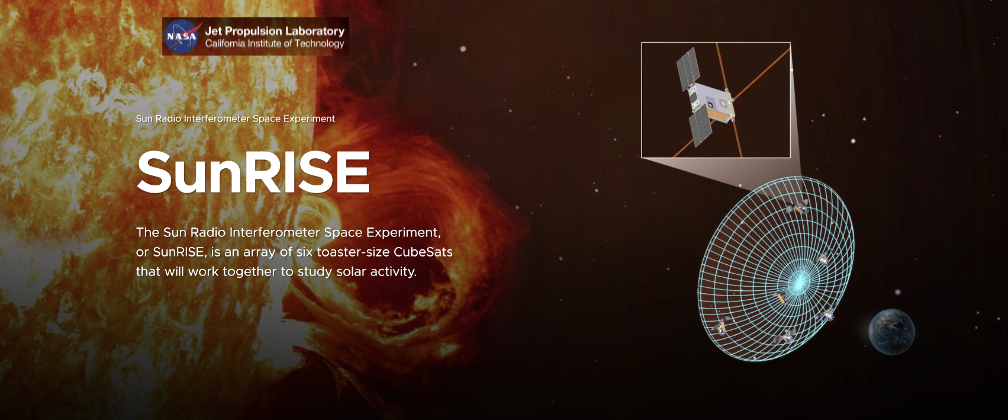
Space Micro Inc., powered by Voyager Space, recently delivered a total of seven (7), flight-level, Single Board Computers (SBCs) to NASA’s Jet Propulsion Laboratory (JPL) of Pasadena, California, for the Sun Radio Interferometer Space Experiment (SunRISE).

Slated for a 2024-2025 launch, SunRISE will collect data obtained by a smallsat array to help scientists better understand how the Sun generates and releases solar particle storms into space and how these storms influence the interplanetary environment. Space Micro’s SBCs contribute to the mission by performing on-board data processing.
According to JPL, SunRISE relies on six solar-powered cubesats – each about the size of a toaster oven – to simultaneously observe radio images of low-frequency emission from solar activity and share them via NASA’s Deep Space Network. The constellation of cubesats will fly within 6 miles (10 kilometers) of each other, above Earth’s atmosphere, which otherwise blocks the radio signals SunRISE will observe. Together, the six cubesats will create 3D maps to pinpoint where giant particle bursts originate on the Sun and how they evolve as they expand outward into space. This, in turn, will help determine what initiates and accelerates these giant jets of radiation. The six individual spacecraft will also work together to map, for the first time, the pattern of magnetic field lines reaching from the Sun out into interplanetary space.
Space Micro’s full suite of computing platforms also includes the Proton400K quad-core SBC and the octal-core Proton600K
quad-core SBC and the octal-core Proton600K Space VPX SBC, which support a wide range of applications. The company has delivered space processors for cislunar, GEO, HEO, and LEO applications for multiple U.S and international civil and national security space programs, with some processors continuing to operate on-orbit more than a decade after launch.
Space VPX SBC, which support a wide range of applications. The company has delivered space processors for cislunar, GEO, HEO, and LEO applications for multiple U.S and international civil and national security space programs, with some processors continuing to operate on-orbit more than a decade after launch.
“Space Micro is honored to be part of the SunRISE team and contribute technology to this innovative mission. This mission expands upon our collaboration with JPL, being the third JPL mission that our team has supported. JPL continues to dare mighty things and we look forward to seeing what the team develops next,” said Space Micro Executive Chair, David J. Strobel.
“Space Micro continues to push the envelope of what is possible, and we’re proud of the impact the company is making not only on SunRISE – but within widespread space research and exploration,” said Dylan Taylor, CEO and Chairman, Voyager Space. “Voyager is built to accelerate the success of our technologies and capabilities, and Space Micro continues to demonstrate this vision.”
Space Micro Inc., powered by Voyager Space and based in San Diego, California, is an engineering-driven supplier of affordable, high-performance, radiation-hardened communications, electro-optics, and digital systems for use in commercial, civil, and military space applications around the world. Space Micro solutions include Telemetry, Tracking and Command (TT&C) transmitters, mission data transmitters, space cameras, star trackers, image processors, Command & Data Handling (C&DH) systems and laser communications systems.
Voyager Space is a space technology company dedicated to building a better future for humanity in space and on Earth. With nearly 20 years of spaceflight heritage and over 1500 successful missions as of April 2022, Voyager delivers space station infrastructure and services and technology solutions to commercial users, civil and national security government agencies, academic and research institutions, and more, with the goal to accelerate a sustainable space economy.
